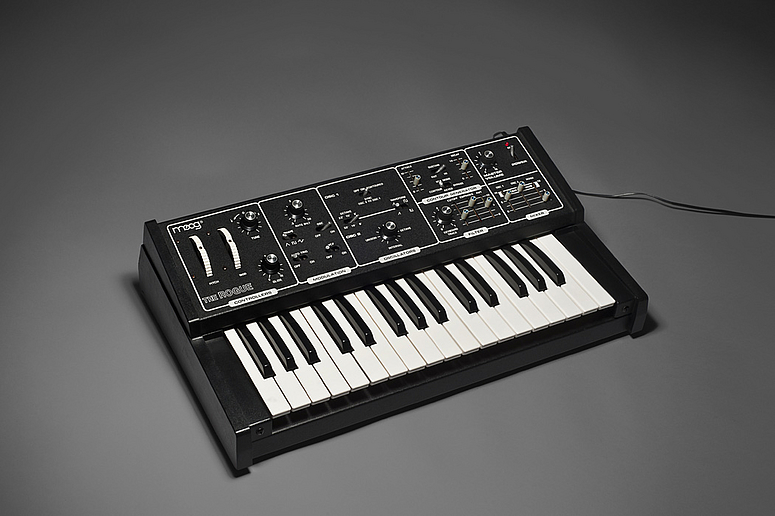Moog Rogue
Easy-to-use lead synthesiser with striking sound
In the early 1980s, Moog Music's The Rogue was the company's entry-level model. Truly a “plug-and-play” monophonic synthesizer, thanks to its very cleverly laid-out concept and reduction to its most crucial functions – which makes dialling in sounds a lot quicker and easier.
- Sound Generation
The Rogue is equipped with two oscillators and a noise source which can be driven into subtle saturation thanks to some cleverly designed circuitry. Oscillator 2 can be spaced one octave above or below the pitch of Oscillator 1, and it can be synced to VCO 1 as well. Screaming lead sounds which cut well through every mix can be realized using the Contoured Sync function which makes use of the envelope signal to control the pitch of Oscillator 2.
- Performance Tools
A modulation wheel and the centre-detented pitch wheel are the performance controls you would have come to expect – for ergonomic reasons, they were both placed above the keyboard. The Glide function produces some very nifty results with this synthesizer.
- Sound
Moog's The Rogue lends itself to all sorts of lead sounds – the scope ranges from flute-like to vocal-type sounds to some really fierce filter sweeps. The Rogue's bass has a little less girth than its bigger siblings, the Minimoog, the Prodigy, or the Opus 3. Thanks to its noise generator and the sample-and-hold wave-shape of the LFO, far-out experimental sounds are within the range of this little synth.
In arrangements, The Rogue blends very well with acoustic instruments.
- Special Feature
For processing external audio signals, there is an Audio Input (albeit lacking an envelope follower). This particular example which is for rent sports an additional input for voltage-control of VCF cut-off frequency.
- manufacturing period: 1981-1983
- weight (with/without case): 14/5 kg
- 1 Day40 €
- 2 Days60 €
-
Weekend
(Fr-Mo) 80 €


